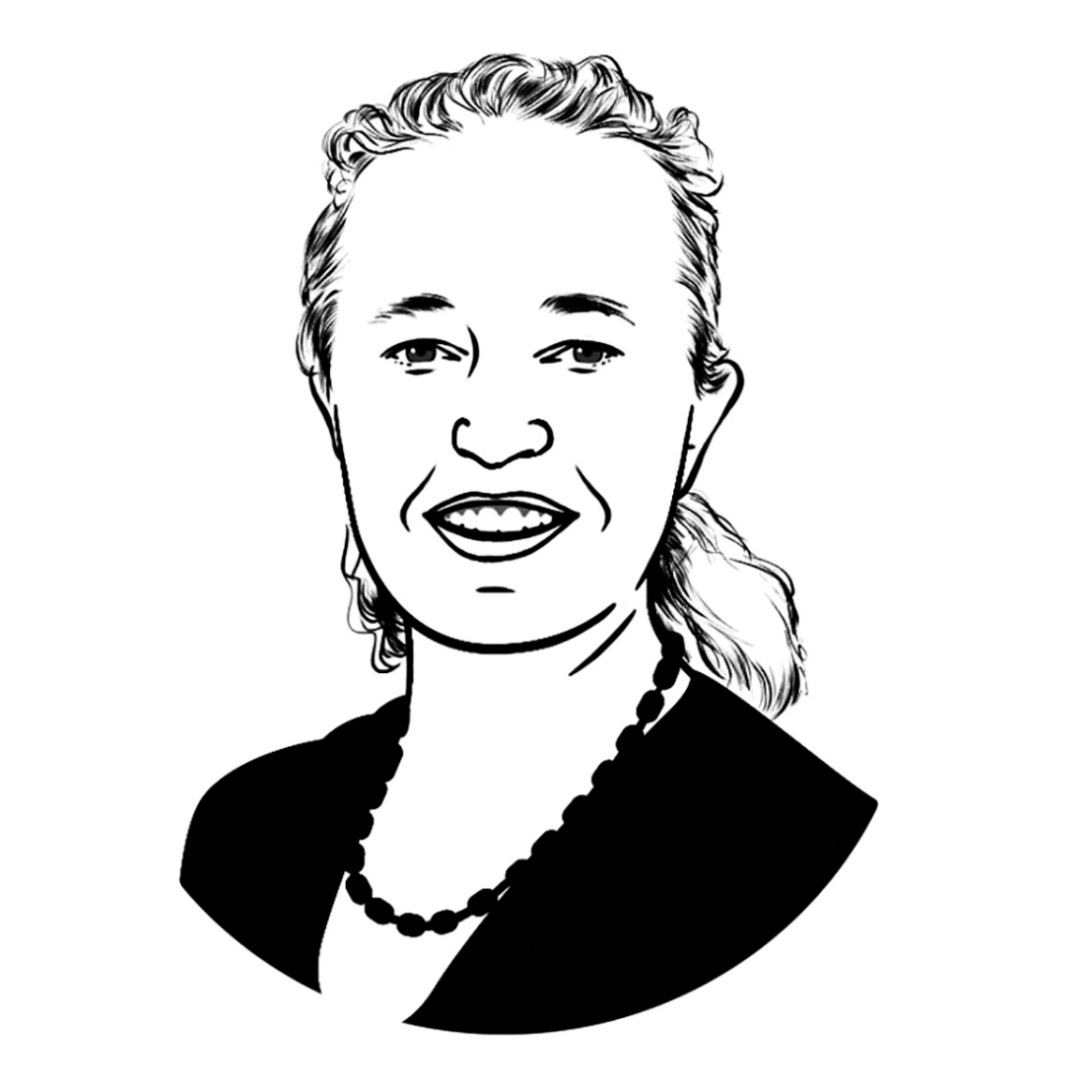Screen or blackboard? Chalk or digital pen? In the current issue of "life", Meike Akveld and Andreas Steiger from the Department of Mathematics discuss the advantages and disadvantages of the classic blackboard in the classroom. And what is your opinion? Discuss with them.
For
Dr. Meike Akveld Senior scientist focusing on teaching at D-MATH

My love of the blackboard began in Warwick and Cambridge, where I studied. They had them everywhere – even in the toilets. And at home, too, I have a lovely big slate board.
But this isn’t about me and my preferences. It’s about maths itself. You learn it step by step. You have to be able to see how a theory came about. You have to discover the path to the solution method yourself. Nothing achieves this so well as the surface of a blackboard, where at the end of a deduction, I can still see the start. Once I’ve finished, I can refer back to something that I explained 30 minutes ago – because it’s still there, white on black.
One could argue that blackboards are a thing of the past because they are difficult to stream online and record. Or because all the students have to follow my tempo. But these issues aren’t solved with a tablet computer. In my experience, lecturers write much faster on such devices. Whereas using crumbly chalk on a blackboard forces me to slow down. What’s more, standing at the board keeps me physically active while I’m teaching, and I imagine that’s more engaging for students than following a digital line on a screen.
“You have to see how a theory came about.”Meike Akveld
It goes without saying that digital notes can be saved as a video or PDF for revision later on. But then something is missing, because when students write along with the method or – more precisely – help to develop it with their own pen, this is their first step on the path to understanding.
So shall we keep using blackboards forever and nothing else besides? Certainly not! In the Department of Mathematics, we are currently working on digital exercise sequences that students can use to run through problems and solutions as often as they want, with feedback provided at the touch of a button. These can replace certain sequences on the blackboard, including in my lectures. But, personally, I simply feel as comfortable at the blackboard as a fish in water – and that is also important when it comes to delivering a good lecture.
Against
Dr. Andreas Steiger Lecturer at D-MATH

At the end of the lecture, the chalk dust was simply everywhere: not just on the blackboard, but also on the floor, on my hands, trousers and lecture notes, and in my face. No, I really don’t miss writing on a blackboard. You end up looking like you’ve come directly from working in a bakery, the skin on your hands is rough and your meticulously created pages of notes are wet and un-readable because you haven't managed to dry your hands properly after wiping the board.
But these were not actually the reasons why I made the switch to a digital notepad five years ago. The large lecture halls at ETH are equipped with a huge graphics tablet complete with an integrated display. Connected to a laptop, this works as an external touchscreen that is fantastic for writing digital hand-written notes on. This opens up lots of possibilities for me that I wouldn’t want to be without. These start with small things, such as the ability to correct mistakes more easily – when using a blackboard, you normally end up with messy scribbles. Using colours is also a faster process when working digitally, and they are also easier to identify on the screen than on the board.
But, for me, the biggest and most important advantage of these digital aids is that I can incorporate multimedia content seamlessly. In my lecture on multidimensional analysis, I use at least one interactive visualisation in almost every double lesson. These enable me to demonstrate, for example, how a spherical coordinate grid takes on the geometry of a curved surface or what a complicated flow field looks like in 3D. And I can do this without pushing the blackboards away, switching the projector on, playing the animation, switching the projector off and then rearranging the boards.
“The board makes maths flat and static.”Andreas Steiger
The notes software also helps me to illustrate the exercises. It automatically turns the misshapen eggs in my hand-drawn sketches into the desired circles, and I can also insert prepared graphics and add explanations to them as I go along. Another advantage is the fact that the students receive my notes in PDF format after the lecture and can therefore follow my explanations during the class instead of focusing on copying down notes.
Many mathematicians love the blackboard for the space it gives them to develop theories. While I can see their point, the board also makes maths flat and static. Given that maths describes so much that is dynamic, this becomes much more understandable when it is visualised three-dimensionally and interactively.
This article appeared in the latest edition of the ETH magazine "life".
Always up to date
Would you like to always receive the most important internal information and news from ETH Zurich? Then subscribe to the "internal news" newsletter and visit Staffnet, the information portal for ETH employees.
Comments
No comments yet